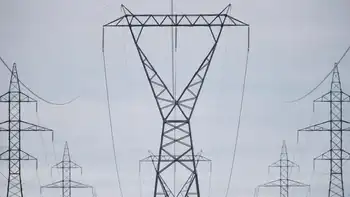Manufacturers skip Boise due to lack of power
BOISE, IDAHO - Two large manufacturing companies have eliminated the Boise area as a possible site for expansion because they needed a lot of electricity - and Idaho Power Company doesn't have it.
The separate proposals could have brought as many as 1,000 jobs each, an economic developer said, but one proposal would have needed between 240 megawatts and 480 megawatts of power - three to six times as much power as used by Micron Technology, the Valley's largest energy user, according to Idaho Power Co.
The utility says it no longer has that much power to sell, and limits on the electrical transmission system would make it hard to bring that much power to Idaho from another source, even if Idaho Power could find affordable power to buy elsewhere, which it can't.
Earlier this fall, site selection firms that represent the companies approached the Boise Valley Economic Partnership, the economic-development arm of the Boise Metro Chamber of Commerce, about taking over the site of the former Tyson Foods meat-packing plant in south Boise.
The plant closed in October 2006, idling 270 people. Paul Hiller, executive director of the partnership, said two companies looked separately at the site, and each needed similar amounts of electricity. The site selection firms didn't identify the companies to Hiller, but he thinks they would have provide good-paying jobs. Hiller said the lack of electricity came as a surprise. "We weren't aware that the constraints were there or that the limitations are as challenging as they are right now," Hiller said. Ever since Idaho Power built its first hydropower dams, economic development officials have touted an ample supply of low-cost electricity as a key attraction for businesses.
But because of an increasing population and an ongoing drought, Idaho Power no longer has a power surplus. Recently, the company sued the federal government to ensure it gets all its water rights from the Snake River to use to generate power . A shortage of power and constraints in transmission are problems across much of the Northwest. But Don Dietrich, economic development administrator for the Idaho Department of Commerce, said the power available in Idaho is still enough to meet the needs of the majority of the companies the state targets. "Clearly there are some companies that are more energy-intensive targets that we will not be able to go after," Dietrich said.
Dan Minor, senior vice president of delivery for Idaho Power, said the company is committed to economic development efforts, but he said BVEP didn't understand how much power the companies wanted. "We look at energy capacity in the Valley as being a precious commodity, almost like water," Minor said. "I really don't think they had any way of putting that into any type of context." A megawatt of power provides enough electricity for 650 homes, he said. Two hundred and forty megawatts would have been enough electricity to power more than 150,000 homes. Micron Technology, Idaho Power's largest customer, uses 80 megawatts.
Idaho Power has had larger customers. Before it closed in 2001, FMC Corp.'s phosphorus plant in Pocatello consumed 500 megawatts. Because of growth, the extra capacity gained when the plant closed is no longer available. Idaho Power tries to plan for growth, but Minor said it's not possible to plan for requests this big.
The company's 2006 integrated resource plan, which looks 20 years ahead, predicted Idaho Power would need to add 1,300 megawatts of capacity to meet demand. Idaho Power meets demand with hydropower, coal-fired plants it co-owns in Wyoming, natural gas plants, some wind power and electricity it buys from other producers.
Minor said Idaho Power is committed to working with Hiller and other development leaders to improve understanding of what types of companies Idaho Power can support.
Ada County Commissioner Fred Tilman said he appreciates Idaho Power's efforts. "How are we going to deal as a state and a community when a major opportunity comes along?" Tilman said. "Just to simply say no is not acceptable." Paul Kjellander, administrator of Gov. Butch Otter's Office of Energy Resources, said Idaho Power's problems are common. "The region as a whole runs into the same problem," Kjellander said. "The reality - and what we have to plan for - is that we're at capacity." The problem is made worse by an overburdened transmission system that can't move power around the region effectively, Kjellander said.
Plans are under way for new transmission lines and new sources of electricity generation, including nuclear power: Idaho Power is partnering with Rocky Mountain Power to build the Gateway West project - a 650-mile transmission line that would connect coal plants in Wyoming to a transmission station near Boise. The first stages of that line probably won't be finishe before 2012. Two companies are considering building nuclear power plants in idaho. If approved, the soonest either of those projects would produce power is 2015. "There is no quick fix," Kjellander said. "We need to communicate that more fully, and that's why energy efficiency is so important.
The more kilowatts we can free up permanently, the more electricity we have for economic development and growth."
Related News

UCP scraps electricity price cap, some will see $7 bill increase this month
EDMONTON - Electricity will be more expensive for some Edmontonians in December after the UCP government scrapped a program that capped rates.
Effective Nov. 30, the province got rid of the price cap program for Regulated Rate Option customers.
In 2017, the NDP government capped the kilowatt per hour price at 6.8 cents, meaning Edmontonians would pay the market rate and not more than the capped price.
In December, kWh will cost 7.5 cents. Typical Edmonton homes use an average of 600 kWh, increasing bills by $7.37, or 3.9 per cent, compared to November.
The NDP created the capacity system to bring price stability…




